From fitness bands that track every move to smartwatches that monitor your heartbeat in real-time, wearable technology has quietly become an extension of our bodies. As this trend continues to redefine how we live, work, and manage our health, the demand for innovative wearable apps and App Development Solutions is growing faster than ever.
But building a wearable device app isn’t just about syncing data or sending notifications to a wrist. It’s about designing intuitive, responsive experiences that blend seamlessly with a user’s lifestyle, whether it’s improving athletic performance, enhancing medical monitoring, or enabling smarter daily habits.
In this guide, we’ll break down everything you need to know about wearable device app development, from core technologies and design considerations to development stages, challenges, and costs.
Wearable Devices App Development Market
The wearable devices app development market in 2025 is experiencing robust growth, with a projected sector value of approximately $3.5 billion and an overall wearable technology market forecast to reach $186 billion by 2030; driving forces include the rising adoption of smartwatches, fitness trackers, and AR glasses, advancements in AI and IoT, expanding consumer demand for personalized health, wellness, and productivity solutions, and a surge of innovation in secure, user-friendly apps tailored for diverse fields such as healthcare, fitness, gaming, retail, and education, while regional growth in Asia-Pacific and ongoing technical challenges like data privacy, device integration, and battery life continue to shape this dynamic, competitive landscape.
Types of On-Demand Wearable Apps and Devices
Built on the foundation of IoT connectivity, wearable technology has evolved far beyond simple fitness trackers and smartwatches. Today, it powers an entire ecosystem of smart, data-driven devices designed to enhance convenience, health, productivity, and entertainment.

From immersive AR headsets to elegant smart jewelry, wearable app development continues to push boundaries, offering businesses and consumers endless possibilities. Here’s a breakdown of the most popular and fast-growing types of on-demand wearable apps and devices dominating the market in 2025 and beyond:
Smartwatch Apps
Smartwatches remain the cornerstone of wearable innovation, offering everything from real-time health monitoring to instant communication and app integrations.
According to Statista, smartwatch shipments are projected to surpass 400 million units by 2026, highlighting their massive user base and adoption rate.
Popular examples: Apple Watch, Samsung Galaxy Watch, Fitbit, Amazfit.
Key features:
- Heart rate and SpO₂ monitoring
- Step, calorie, and sleep tracking
- ECG/ECH functionality
- Smart notifications and voice control
Fitness Band Apps
Fitness bands cater to those who want compact, affordable, and activity-focused wearables. These devices sync with fitness apps to analyze user performance, health stats, and daily activity patterns — making them indispensable for fitness enthusiasts.
Popular examples: Fitbit Charge, Garmin Vivosmart, Xiaomi Mi Band, Honor Band.
Key features:
- Health metrics dashboard
- Step and calorie counter
- Oxygen saturation and breathing rate monitoring
- Sleep and stress tracking
Head-Mounted Display (HMD) Apps
Head-mounted displays, including AR and VR headsets, redefine immersive digital experiences. From enterprise training and medical simulations to gaming and industrial operations, these devices merge the physical and digital worlds seamlessly.
Popular examples: Microsoft HoloLens 2, Meta Quest 3, HTC Vive Pro.
Key features:
- Hand, voice, and eye tracking
- Real-time data overlay and object recognition
- Immersive 3D visualization for AR/VR environments
Smart Jewelry Apps
Blending fashion with functionality, smart jewelry allows users to stay connected without compromising on aesthetics. Devices like smart rings, bracelets, and necklaces discreetly track health, send notifications, and even assist in safety monitoring.
Popular examples: Oura Ring, Bellabeat Leaf, Ringly, Circular Smart Ring.
Key features:
- Health and activity tracking
- Smart alerts and notifications
- Sleek, minimalist designs for everyday wear
Smart Eyewear Apps
Smart eyewear is reshaping how we interact with the world, overlaying real-time information and enabling hands-free communication. Powered by AI, sensors, and wireless connectivity, smart glasses are gaining traction in both consumer and enterprise use cases.
Popular examples: Google Glass, Ray-Ban Meta Smart Glasses, Lucyd Lyte.
Key features:
- Augmented visual data and navigation
- Voice-activated assistance
- Real-time image capture and data storage
Step-by-Step Guide to Wearable App Development

Wearable technology is rapidly reshaping how users interact with the digital world. Whether it’s tracking health metrics, enhancing productivity, or enabling immersive AR experiences, wearable app development bridges human and machine interaction in real time. Here’s a detailed breakdown of every stage involved in building a successful wearable app, from idea to deployment and beyond.
1. Conceptualization and Research
Before writing a single line of code, you must clearly define why your wearable app exists. Every successful wearable app development project begins with understanding user needs, market gaps, and technical feasibility. This stage sets the tone for your app’s success.
Key steps:
- Identify the core problem your app will solve (e.g., real-time health monitoring, habit tracking, AR navigation).
- Define target audience personas — understand their goals, preferences, and usage patterns.
- Conduct competitor research to study existing wearable solutions and uncover missing features.
- Outline a unique value proposition and success metrics (e.g., accuracy, engagement rate, daily usage).
- Validate feasibility based on sensor capabilities and OS limitations of the target device.
2. Platform Selection
Choosing the right platform is crucial for ensuring compatibility, functionality, and scalability. Different devices operate on different systems — and the platform you select will dictate the development tools, programming languages, and SDKs your team uses.
Key steps:
- Evaluate popular platforms like Wear OS, watchOS, Tizen, and HarmonyOS.
- Decide between native or cross-platform development (Flutter, Kotlin Multiplatform, React Native).
- Review vendor SDKs — Apple’s HealthKit, Google Fit, Fitbit SDK, or Samsung SDK.
- Consider whether the app will function as a standalone app or rely on a smartphone companion.
- Partner with a web app development company familiar with multi-device ecosystems for better integration.
3. Designing & User Experience (UX/UI)
Wearable screens are small — so every pixel and gesture matters. The design should be simple, glanceable, and intuitive. A well-thought-out UX/UI ensures the app feels natural on the wrist, eyewear, or band.
Key steps:
- Prioritize glanceable interfaces — display critical data instantly.
- Use minimalist layouts with large fonts, clear icons, and short navigation paths.
- Incorporate voice commands, gestures, or haptics for smooth interaction.
- Test different designs in real environments (outdoors, gyms, etc.) for visibility and usability.
- Focus on contextual design — the app should adapt based on motion, activity, or time of day.
4. Battery Optimization
Battery efficiency can make or break a wearable app. Since wearables have smaller batteries than smartphones, every background process, sensor use, and data sync impacts performance.
Key steps:
- Implement efficient data sampling by batching sensor readings instead of constant monitoring.
- Reduce background tasks and network calls to save power.
- Use lightweight code and compressed data formats for faster performance.
- Enable adaptive refresh rates to extend battery life.
- Test on real devices using OS profiling tools like Xcode Energy Log or Android Profiler.
5. Data Security and Privacy
Wearable apps often collect sensitive data such as heart rate, steps, sleep patterns, and even GPS location. Building user trust starts with ensuring data protection and compliance with global standards.
Key steps:
- Encrypt all data transmissions (TLS 1.2+) and storage using secure keys.
- Implement authentication and token-based access (OAuth2).
- Store sensitive data securely using Apple Keychain or Android Keystore.
- Follow privacy regulations like GDPR and HIPAA if handling medical data.
- Be transparent — include clear privacy policies and consent options for users.
6. Integration with Devices and Ecosystems
Wearable apps rarely operate in isolation — they communicate with smartphones, IoT devices, and the cloud. Smooth integration ensures data flows seamlessly between devices, maintaining consistent functionality.
Key steps:
- Enable real-time data sync via Bluetooth, WiFi, or cloud APIs.
- Design robust APIs for communication between wearable and mobile/IoT apps.
- Ensure offline functionality for times when connectivity drops.
- Integrate with AI business solutions like predictive analytics or health insights to add smart features.
- Test for multi-device compatibility — across brands, models, and operating systems.
7. Testing and Prototyping
Testing is where your app proves its reliability. In wearable app development, testing must go beyond basic functionality — it must account for motion, battery, sensor accuracy, and environmental factors.
Key steps:
- Build interactive prototypes to validate UX before coding.
- Conduct unit, integration, and hardware testing on emulators and real devices.
- Simulate real-world conditions — like low network, motion, and light environments.
- Run battery drain and performance tests to evaluate efficiency.
- Collect beta feedback from real users through TestFlight or Play Store internal testing.
8. Deployment and Maintenance
Once your wearable app is ready, it’s time to launch it on the right app store and ensure a smooth post-launch experience. Regular updates keep your app relevant and functional as OS versions evolve.
Key steps:
- Publish to Google Play, Apple App Store, or Samsung Galaxy Store, adhering to each platform’s rules.
- Provide detailed metadata, screenshots, and descriptions optimized for search.
- Monitor app analytics to track usage, engagement, and crash reports.
- Release frequent updates to fix bugs and enhance features.
- Partner with a web app development company that offers ongoing maintenance and scalability support.
Conclusion
Wearable device app development represents a powerful intersection of technology, design, and human connection. As wearables continue to evolve from fitness trackers to intelligent health companions and immersive AR tools, the opportunity for innovation is limitless. Building a successful wearable app isn’t just about leveraging sensors or AI. It’s about creating experiences that genuinely improve how people live, move, and interact with the world around them. With the right strategy, technology stack, and user-centered design, businesses can shape the future of connected living and stay ahead in this rapidly expanding digital ecosystem.


 Healthcare App Development Services
Healthcare App Development Services
 Real Estate Web Development Services
Real Estate Web Development Services
 E-Commerce App Development Services
E-Commerce App Development Services E-Commerce Web Development Services
E-Commerce Web Development Services Blockchain E-commerce Development Company
Blockchain E-commerce Development Company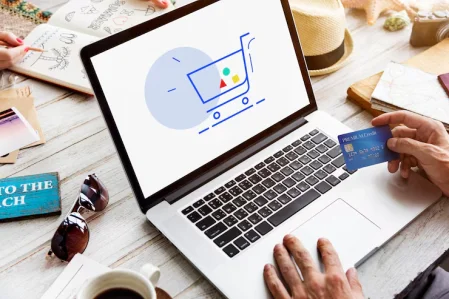
 Fintech App Development Services
Fintech App Development Services Fintech Web Development
Fintech Web Development Blockchain Fintech Development Company
Blockchain Fintech Development Company
 E-Learning App Development Services
E-Learning App Development Services
 Restaurant App Development Company
Restaurant App Development Company
 Mobile Game Development Company
Mobile Game Development Company
 Travel App Development Company
Travel App Development Company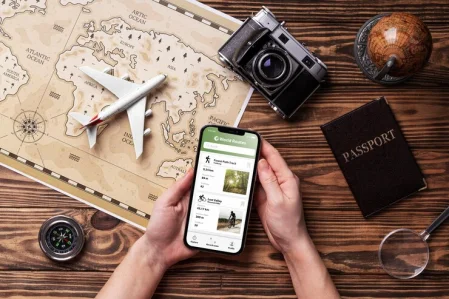
 Automotive Web Design
Automotive Web Design
 AI Traffic Management System
AI Traffic Management System
 AI Inventory Management Software
AI Inventory Management Software
 AI Software Development
AI Software Development  AI Development Company
AI Development Company  AI App Development Services
AI App Development Services  ChatGPT integration services
ChatGPT integration services  AI Integration Services
AI Integration Services  Generative AI Development Services
Generative AI Development Services  Natural Language Processing Company
Natural Language Processing Company Machine Learning Development
Machine Learning Development  Machine learning consulting services
Machine learning consulting services  Blockchain Development
Blockchain Development  Blockchain Software Development
Blockchain Software Development  Smart Contract Development Company
Smart Contract Development Company  NFT Marketplace Development Services
NFT Marketplace Development Services  Asset Tokenization Company
Asset Tokenization Company DeFi Wallet Development Company
DeFi Wallet Development Company Mobile App Development
Mobile App Development  IOS App Development
IOS App Development  Android App Development
Android App Development  Cross-Platform App Development
Cross-Platform App Development  Augmented Reality (AR) App Development
Augmented Reality (AR) App Development  Virtual Reality (VR) App Development
Virtual Reality (VR) App Development  Web App Development
Web App Development  SaaS App Development
SaaS App Development Flutter
Flutter  React Native
React Native  Swift (IOS)
Swift (IOS)  Kotlin (Android)
Kotlin (Android)  Mean Stack Development
Mean Stack Development  AngularJS Development
AngularJS Development  MongoDB Development
MongoDB Development  Nodejs Development
Nodejs Development  Database Development
Database Development Ruby on Rails Development
Ruby on Rails Development Expressjs Development
Expressjs Development  Full Stack Development
Full Stack Development  Web Development Services
Web Development Services  Laravel Development
Laravel Development  LAMP Development
LAMP Development  Custom PHP Development
Custom PHP Development  .Net Development
.Net Development  User Experience Design Services
User Experience Design Services  User Interface Design Services
User Interface Design Services  Automated Testing
Automated Testing  Manual Testing
Manual Testing  Digital Marketing Services
Digital Marketing Services 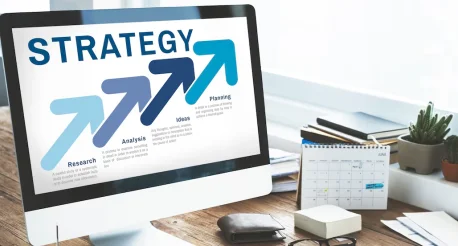
 Ride-Sharing And Taxi Services
Ride-Sharing And Taxi Services Food Delivery Services
Food Delivery Services Grocery Delivery Services
Grocery Delivery Services Transportation And Logistics
Transportation And Logistics Car Wash App
Car Wash App Home Services App
Home Services App ERP Development Services
ERP Development Services CMS Development Services
CMS Development Services LMS Development
LMS Development CRM Development
CRM Development DevOps Development Services
DevOps Development Services AI Business Solutions
AI Business Solutions AI Cloud Solutions
AI Cloud Solutions AI Chatbot Development
AI Chatbot Development API Development
API Development Blockchain Product Development
Blockchain Product Development Cryptocurrency Wallet Development
Cryptocurrency Wallet Development About Talentelgia
About Talentelgia  Our Team
Our Team  Our Culture
Our Culture 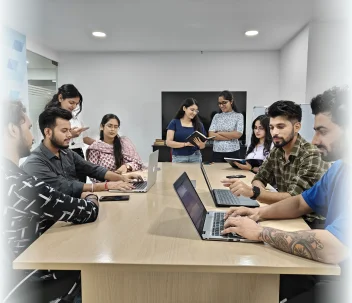
 Healthcare App Development Services
Healthcare App Development Services Real Estate Web Development Services
Real Estate Web Development Services E-Commerce App Development Services
E-Commerce App Development Services E-Commerce Web Development Services
E-Commerce Web Development Services Blockchain E-commerce
Development Company
Blockchain E-commerce
Development Company Fintech App Development Services
Fintech App Development Services Finance Web Development
Finance Web Development Blockchain Fintech
Development Company
Blockchain Fintech
Development Company E-Learning App Development Services
E-Learning App Development Services Restaurant App Development Company
Restaurant App Development Company Mobile Game Development Company
Mobile Game Development Company Travel App Development Company
Travel App Development Company Automotive Web Design
Automotive Web Design AI Traffic Management System
AI Traffic Management System AI Inventory Management Software
AI Inventory Management Software AI Software Development
AI Software Development AI Development Company
AI Development Company ChatGPT integration services
ChatGPT integration services AI Integration Services
AI Integration Services Machine Learning Development
Machine Learning Development Machine learning consulting services
Machine learning consulting services Blockchain Development
Blockchain Development Blockchain Software Development
Blockchain Software Development Smart contract development company
Smart contract development company NFT marketplace development services
NFT marketplace development services IOS App Development
IOS App Development Android App Development
Android App Development Cross-Platform App Development
Cross-Platform App Development Augmented Reality (AR) App
Development
Augmented Reality (AR) App
Development Virtual Reality (VR) App Development
Virtual Reality (VR) App Development Web App Development
Web App Development Flutter
Flutter React
Native
React
Native Swift
(IOS)
Swift
(IOS) Kotlin (Android)
Kotlin (Android) MEAN Stack Development
MEAN Stack Development AngularJS Development
AngularJS Development MongoDB Development
MongoDB Development Nodejs Development
Nodejs Development Database development services
Database development services Ruby on Rails Development services
Ruby on Rails Development services Expressjs Development
Expressjs Development Full Stack Development
Full Stack Development Web Development Services
Web Development Services Laravel Development
Laravel Development LAMP
Development
LAMP
Development Custom PHP Development
Custom PHP Development User Experience Design Services
User Experience Design Services User Interface Design Services
User Interface Design Services Automated Testing
Automated Testing Manual
Testing
Manual
Testing About Talentelgia
About Talentelgia Our Team
Our Team Our Culture
Our Culture
















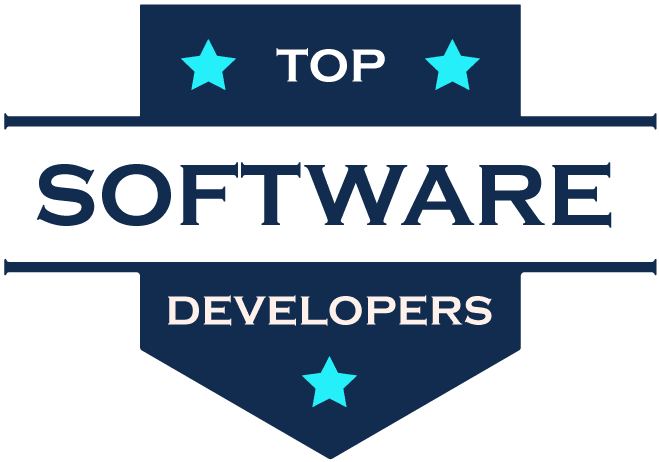
 Write us on:
Write us on:  Business queries:
Business queries:  HR:
HR: 




